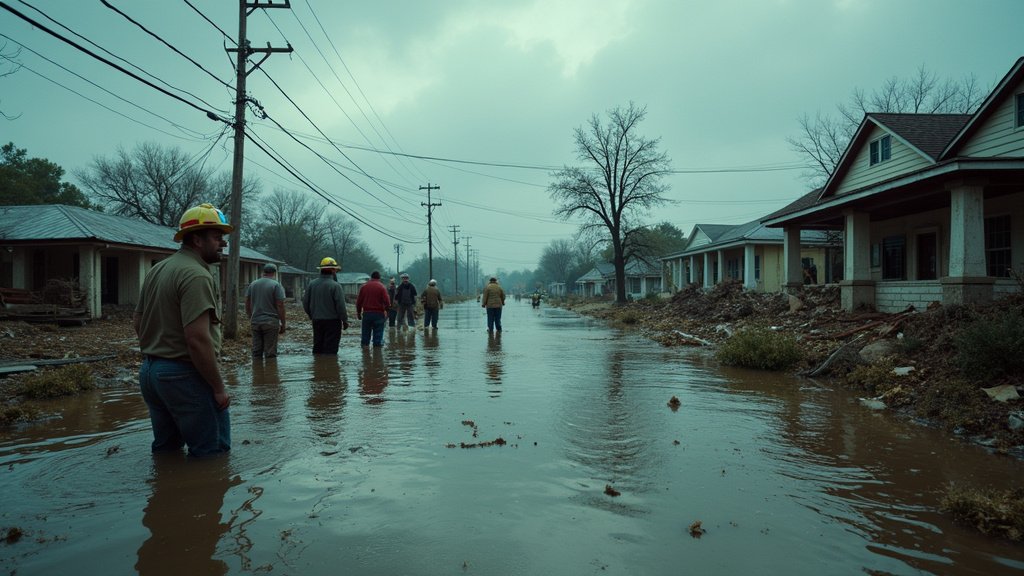Texas Floods: Natural Disaster or Policy Failure?
The recent devastating floods in Texas, a region frequently battered by extreme weather, have once again brought the issue of disaster preparedness and infrastructure into sharp focus. While the immediate aftermath often reveals the scale of destruction, the long-term consequences and the underlying factors contributing to the damage are now being critically examined. A recent opinion piece, which has sparked considerable debate, posits a challenging perspective: that these floods were not solely natural disasters, but also the result of policy failures.
The Argument for Policy Responsibility
The core argument of the opinion piece rests on the assertion that the impact of the floods was significantly worsened by a lack of preparedness and inadequate infrastructure. The author contends that while the force of nature is undeniable, the extent of the damage and suffering could have been lessened through proactive measures and robust policy changes. This perspective shifts the blame, or at least a significant portion of it, from the whims of the weather to the decisions made – or not made – by those in positions of power.
The piece does not dismiss the role of the intense rainfall and other meteorological conditions that caused the floods. Instead, it highlights the interconnectedness between these natural events and the human factors that exacerbate their effects. Examples of these factors could include inadequate drainage systems, insufficient building codes, and a lack of comprehensive emergency response plans.
Infrastructure Deficiencies and the Impact of Preparedness
The opinion piece underscores the vital importance of infrastructure in mitigating the effects of natural disasters. This encompasses a broad range of elements, from levees and flood control systems to the design and construction of buildings. The author suggests that years of underinvestment and a lack of foresight have left many communities vulnerable to the escalating threats posed by extreme weather.
The absence of sufficient preparedness is another key point. This includes the absence of robust emergency response plans, inadequate early warning systems, and a lack of public awareness campaigns. Such deficiencies can translate into increased loss of life, property damage, and long-term economic consequences. The argument stresses that these issues are not simply technical challenges; they are complex problems rooted in political will, funding priorities, and community engagement.
The Call for Reevaluation and Change
At the heart of the opinion piece is a call for a thorough reevaluation of current policies and a firm commitment to improving infrastructure. The author does not offer specific policy prescriptions but emphasizes the need for a comprehensive approach that addresses both short-term needs and long-term sustainability. This would involve increased investment in infrastructure projects, the implementation of stricter building codes, and a heightened emphasis on disaster preparedness.
This reevaluation would extend beyond the immediate aftermath of the floods, encompassing an analysis of the factors that made communities vulnerable in the first place. This could include evaluating the effectiveness of current land-use regulations, zoning practices, and the overall impact of urban development on flood risks. The goal is to build more resilient communities capable of withstanding the increasing frequency and intensity of extreme weather events.
Lessons Learned and the Path Forward
The opinion piece concludes with a sobering assessment: ignoring the lessons from these floods will only lead to more suffering and loss in the future. The author points out that the cycle of disaster, recovery, and rebuilding without addressing the underlying causes is unsustainable. It is a perspective that urges action, stressing the need for proactive measures and policy changes to protect communities from similar tragedies.
The ongoing debate surrounding the Texas floods highlights the critical intersection of natural forces and human choices. It serves as a reminder that disaster resilience is not solely about reacting to events; it’s about anticipating risks, investing in preparedness, and creating communities that are better equipped to withstand the challenges of a changing climate. The question now is whether policymakers, community leaders, and residents will heed the warning and embrace the necessary changes to mitigate the impact of future events.






